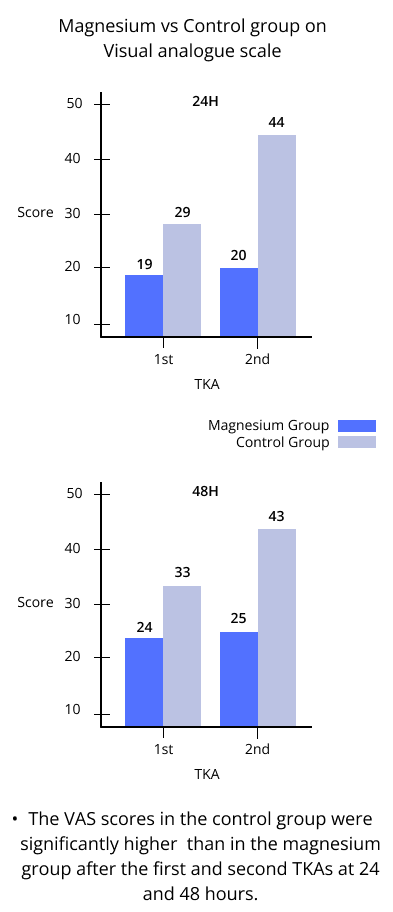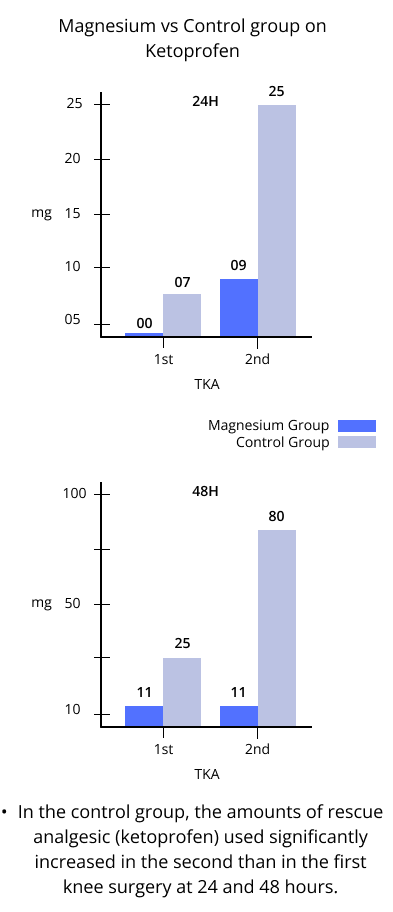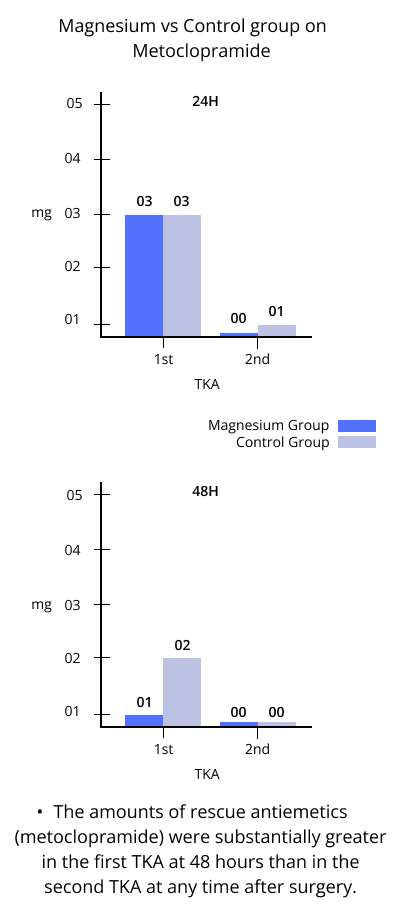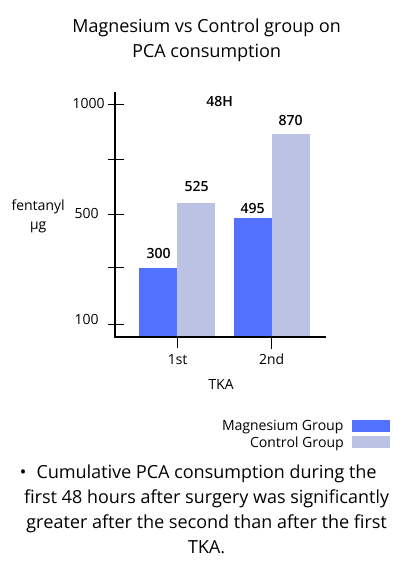
The Benefits of Magnesium Sulfate for Postoperative Pain Management in Staged Bilateral Total Knee Arthroplasty

Table Of Contents
What is Total Knee Arthroplasty?
One may need a total knee arthroplasty (TKA) to relieve the pain in severe osteoarthritis. However, TKA can be associated with postoperative pain, making it difficult to recover. Recently, we found that patients who had staged bilateral TKAs experienced more pain after surgery. Staged bilateral TKA is a procedure wherein both knee replacements take place as two separate surgical events planned weeks or months apart, one after the other, requiring two hospital stays, two episodes of anesthesia and two rehabilitation periods.
Effective pain management immediately before and during surgery, until the patient is discharged is essential to fast recovery and avoid problems like delirium or any pain-related stress responses. Research has shown that severe pain after surgery on the second knee seems to be closely related to chronic pain after surgery on the other knee.
Can Magnesium be an Effective Analgesic Adjuvant for Postoperative Pain?
Magnesium sulfate is an effective analgesic adjuvant (means it enhances the effect of an analgesic) for postoperative pain. It seems to work by regulating calcium influx into cells or by blocking N-methyl-d-aspartate (NMDA) receptors in the central nervous system. Additionally, magnesium has anti-inflammatory properties that further reduce pain.
This study looked at whether magnesium can help reduce pain after surgery on the second knee. We assessed how much magnesium sulfate could lessen the pain after the second surgery, one week after the first. Our broader goal was to find an effective way to alleviate the increased pain intensity that often happens with this type of surgery.
The Study on Magnesium Sulfate for Postoperative Pain Management
After surgery, the magnesium group of 22 patients and the control group of the same number received magnesium sulfate and isotonic saline, respectively. The postoperative pain at rest was measured using the visual analog scale (VAS) with 0 meaning no pain. Data on the amounts of the patient-controlled analgesia (PCA), fentanyl, and rescue analgesia, ketoprofen, administered during the first 48 hours were compared within each group between the first and second TKA, and between the two groups.
The Results
The VAS scores in the control group were significantly higher than in the magnesium group after the first and second TKAs at 24 and 48 hours.
In the control group, VAS scores and the amounts of rescue analgesic (ketoprofen) used significantly increased in the second than in the first knee surgery at 24 and 48 hours. Cumulative PCA consumption during the first 48 hours after surgery was significantly greater after the second than after the first TKA. The amounts of rescue antiemetics (metoclopramide) were substantially greater in the first TKA at 48 hours than in the second TKA at any time after surgery.



In the magnesium group, no significant differences in VAS scores between the first and second TKA were observed. Magnesium considerably reduced the amounts of rescue analgesic and fentanyl administered over the first 48 hours postoperatively. The total amounts of PCA during the first 48 hours postoperatively and rescue analgesic (ketoprofen) during the first 24 hours were significantly higher in the second than in the first operation. The amounts of rescue antiemetic (metoclopramide) were significantly greater in the first TKA at 24 hours than in the second TKA at any time after operation.

There was no report on complications, such as cardiac arrhythmia or excessive sedation, during any of the procedures.
The Conclusion
These results confirmed previous findings that postoperative pain scores and analgesic consumption in the second TKA are higher than those of the first TKA. However, the infusion of magnesium sulfate significantly lessened postoperative pain and decreased the difference in pain intensity between the first and second TKAs.
Reference
Related Posts




Quick Links
Legal Stuff



